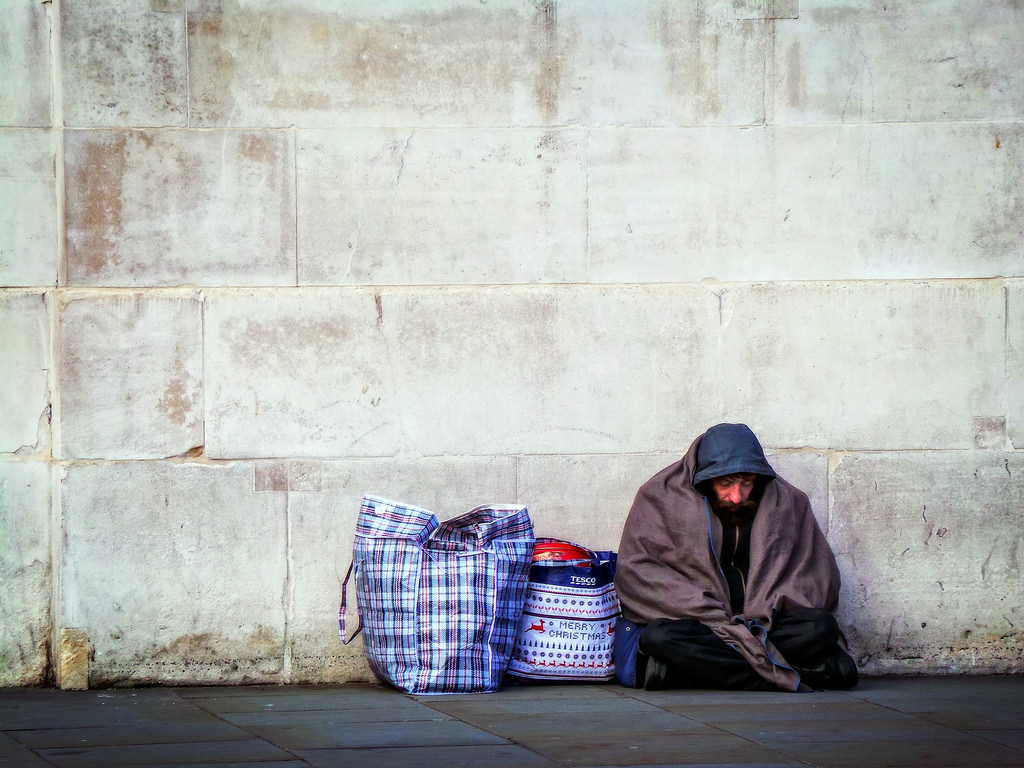By Timothy L. Coyle, consultant specializing in housing issues.
Homelessness is a scourge of humanity and a bitter failure of government. The victims of this incompetence and malfeasance are, of course, the homeless. For homeless individuals with alcohol or other substance abuse it’s likely it is due to a lack of coordination of services. For those with mental illness, it’s an abdication – government simply not doing its job. For veterans, it’s a disgrace. For all those other able-bodied individuals who spend night after night outdoors – suffering from a lack of affordable housing – government funding isn’t helping.
The National Coalition for the Homeless cites as the main causes of homelessness: lack of affordable housing; poverty; lack of affordable health care; domestic violence; mental illness; and substance abuse. (Upon closer examination, however, both lack of affordable housing and health care can be attributed by a high rate of poverty.)
California is home to more than one-fifth of the nation’s homeless people, and the numbers are continuing to grow. The state estimates the number of homeless in California is nearly 500,000. Los Angeles County says its homeless population increased by 13,000 people last year, to a level approaching 60,000 – tho providers think it’s much higher. Same in San Francisco, which believes its homeless population has grown to over 30,000. Metropolitan areas like San Diego and San Jose have jumped to just under 10,000 apiece. Meanwhile, the feds vowed in 2010 to end chronic homelessness by 2020; 2015 for veterans.
No one in the U.S. should be homeless. In a wealthy country like ours, that boasts one of the world’s most generous safety nets, homelessness shouldn’t exist at all. Combined, the federal and state governments spend billions every year for the nation’s down-trodden, especially those with the particular torments of the homeless population. So, where does all of this money go?
The whole funding thing is a mess. A recent study of the Institute for Local Government listed dozens of federal funding programs for the homeless – baffling even the beneficiary shelter and service providers. The same report reveals that state providers have been wrestling for 10 years over how to spend a half-billion dollars of voter-approved funds for shelters here in California. Lastly, local governments are desperately using a variety of local funding sources to address their growing homelessness problem. These sources include public safety funding and resources, local sales tax, animal care and regulation fees, transit or transportation assistance, development fees, transient occupancy taxes, bond proceeds and local general funds.
Indeed, the division of funding for homeless relief between federal, state and local governments is perplexing, at least. Billions are spent every year but what is government’s strategy for dealing with the problem? No one knows because as you go from agency to agency, the message is mixed. What do the feds say? How about HUD? Or VA? Or HHS? Our HCD? They all want to help. But, how?
It’s not even certain government is asking the right questions. They still ask: does the problem stem from the nation’s lack of affordable housing? Is it a mental health problem? Or, one dealing with substance abuse? Does the problem deserve a brick-and-mortar solution? Or, should services be provided? If so, which ones?
If it is housing supply, how does government get around the fact that in most places in California government is the problem? That most housing approvals are being debated not in the city council chambers but in municipal court? This is not to mention that the main housing subsidy funding coming from the federal government comes mainly in the form of vouchers – which aren’t tied to a building (or a building program, for that matter) but simply supplement incomes for purposes of renting housing. Vouchers aren’t a supply strategy and may not match up well with a plan to curtail homelessness.
When it comes to homelessness the federal government should be the primary funding source but it may be that the best idea is to leave solutions to the locals. Shelters like Father Joe Carroll’s facility in downtown San Diego do well in attending to the emergency needs of street people. Or, maybe funding needs to go toward programs like PATH Beyond Shelter in Los Angeles, which concentrates on a more comprehensive approach to serving this needy population. Or, the transitional housing approach of Peacock Commons in San Jose may be the most sensible. Seems like the locals know best.
Everyone has an idea of what might we might do to deal with homelessness. But, maybe we’re attempting too much. Let the locals decide. After all they’re living with the problem. And, why not send all that money from Washington to them directly? Might be a good start . . . and the beginnings of a good ending.





